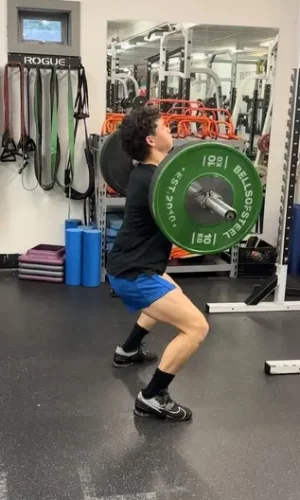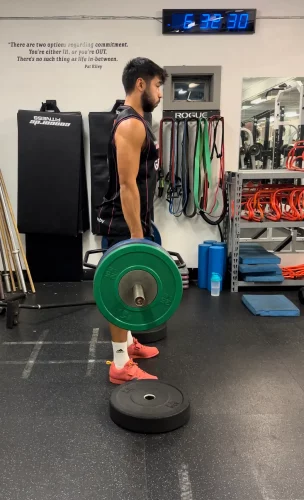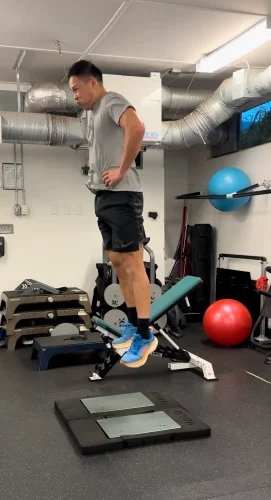To achieve that edge, athletes need a training approach that optimizes strength and power while minimizing the risk of injury. Undulating periodisation is that approach, blending history, science, and adaptability for in-season training.
The History of Undulating Periodisation

Undulating periodisation is a training approach that brings together a rich history of strength training and the need for adaptable, individualized training. While the term “undulating periodisation” might be relatively new, the principles behind it have been used by strength training pioneers for decades. Early figures like Arthur Saxon, Eugen Sandow, and George Hackenschmidt introduced structured training programs that laid the foundation for modern periodisation.
Linear periodisation, which gradually increases intensity while decreasing volume over several weeks, became the norm in the mid-20th century. However, as athletes and coaches sought more adaptable training, the concept of undulating periodisation emerged. The principles have historical ties to the demand for dynamic training approaches.
The Science Behind Undulating Periodisation
As training methods developed and typically training structures became established, coaches and physiologists like Tudor Bompa, Leo Matteyev, and more recently, Charles Poliquin began to experiment with non-linear-based periodisation. Essentially, this training model is based on the concept that volume and load are altered more frequently (daily, weekly, biweekly) in order to allow the neuromuscular system longer periods of recovery as lighter loads are performed more often.
Varying the volume and load allows for specific stimuli on the body, leading to strength, power, speed, and hypertrophy adaptations.
Here’s a closer look at the scientific elements that make this approach effective:
Strength Adaptations:
- Variation in Load: To enhance strength, undulating periodisation incorporates variations in load. This variation exposes the body to a range of resistance levels. For example, heavy days with lower reps and high intensity (i.e., lifting close to one’s one-rep max) can stimulate neural adaptations, improving the body’s ability to recruit muscle fibres efficiently. Lighter days with higher reps provide a different type of stimulus that contributes to muscle hypertrophy, thus supporting overall strength development.
- Mechanical Tension: The variation in load, particularly on heavy days, creates substantial mechanical tension within the muscle fibres. This tension promotes structural adaptations in the muscle, making it more capable of producing force, which is fundamental to increasing strength.
Power Adaptations:
- Rapid Force Development: Power, which combines speed and strength, is crucial in sports where explosive movements are involved. Undulating periodisation includes exercises and rep schemes that emphasise rapid force development. For example, incorporating exercises like hang cleans and plyometric drills, and using lower reps with moderate to heavy loads, encourages the neuromuscular system to generate force quickly, leading to improved power output.
- Neural Adaptations: The quick, explosive contractions demanded during power-focused training stimulate the central nervous system. Over time, this leads to improved coordination between the nervous system and muscle fibres, allowing athletes to execute powerful movements with precision.

Speed Adaptations:
- Neuromuscular Coordination: Speed is often the differentiating factor in sports. Undulating periodisation’s emphasis on varied rep schemes, rapid force development, and exercises targeting specific muscle groups used in sprinting, like the hip flexors and quadriceps needed for hip flexor and hamstrings and glutes for hip extension. Thus, it enhances neuromuscular coordination. This coordination results in smoother, more efficient movements, ultimately contributing to greater speed.
- Rate of Force Development: Speed relies on the ability to generate force rapidly. Undulating periodisation includes elements that encourage the development of Rate of Force Development (RFD), such as variable resistance in exercises. The resistance increases as acceleration occurs, mirroring the demands of explosive movements in sports.
Hypertrophy Adaptations:
- Variation in Reps and Volume: Undulating periodisation deliberately incorporates days with higher reps and volume. This variation stimulates muscle hypertrophy by causing muscle fibres to experience prolonged periods of tension and stress. These high-repetition, volume-focused workouts contribute to muscle growth, leading to both increased muscle size and greater strength.
- Time Under Tension: To achieve hypertrophy, time under tension is a critical factor. The variation in reps and volume ensures that muscle fibres are exposed to extended time under tension. This extended stress leads to cellular-level adaptations, including an increase in the size and number of myofibrils, ultimately contributing to hypertrophy.
Benefits for Team Sport Athletes Training In-Season
Undulating periodisation offers several key benefits for team sport athletes during the in-season:
- Optimized Performance: The variation in training variables helps maintain and enhance strength, power, and agility, ensuring athletes remain at their peak during the season, regardless of whether they are sprinting on the soccer field, driving down the basketball court, or engaging in rugby scrums.
- Reduced Risk of Overtraining: Daily or weekly adjustments based on performance and recovery minimize the risk of overtraining and injuries, allowing athletes to perform consistently.
- Enhanced Adaptation: Frequent changes in training variables promote neuromuscular adaptation and coordination, leading to more effective movements and on-field performance.
- Individualization: Training is tailored to an athlete’s specific sport and position, maximizing the development of skills and strengths relevant to their role on the team.

Undulating periodisation is a powerful training strategy for team sport athletes. Combining the rich history of strength training with the science of exercise physiology offers the adaptability needed to excel in a dynamic and demanding in-season environment, while ensuring athletes receive a well-rounded and comprehensive training stimulus. Whether you’re a soccer player, a basketball athlete, or a rugby enthusiast, undulating periodisation can help you unlock your peak performance and rise to the challenges of team sports.
If you have any questions or need assistance with your training preparations, do not hesitate to contact us at [email protected] or call us at 778-788-5438.
